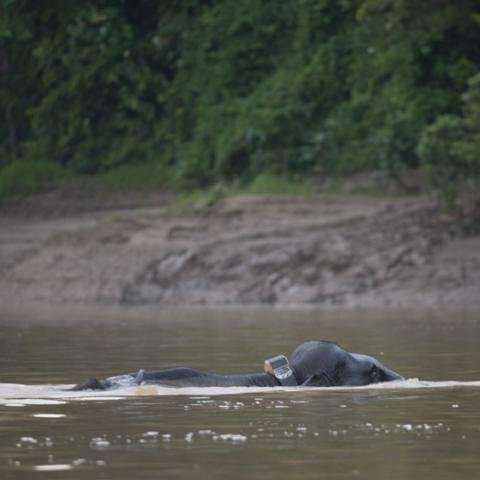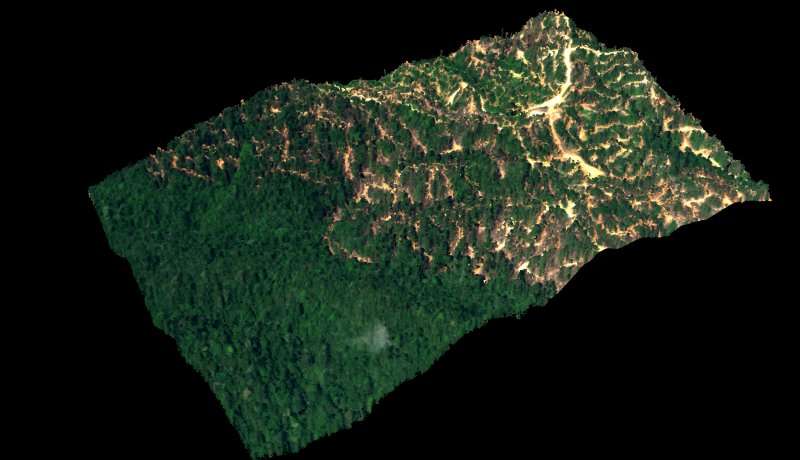Priorities for managing protected areas are crucial for Bornean elephants

Degraded forests play a crucial role in the future survival of Bornean elephants. A new study, published in the journal Biological Conservation, finds that forests of surprisingly short stature are ideal for elephants.
"Our study indicates that forests with a mean canopy height of 13 meters (about 43 feet) were those most utilized by Bornean elephants. These forests are consistent with degraded landscapes or those recovering from previous logging, or clearance," noted lead author Luke Evans, a postdoctoral researcher at Carnegie and Danau Girang Field Centre. "The study utilized GPS tracking data from 29 individual elephants that were collared across Sabah, providing high resolution, multi-year data."
The study paired the GPS tracking data for each elephant with airborne laser-based images of forests in Sabah, Malaysia, on the island of Borneo, providing high-resolution, three-dimensional maps of forest canopy height and structure.
Co-author Greg Asner explained how the Carnegie Airborne Observatory enabled these findings: "Our mapping of Sabah's forests is unique in that it provides accurate and detailed spatial information on forest structure. Combined with the GPS telemetry data for the elephants, the connection between relatively low-statured tree canopies and elephant habitat emerged in a way that was previously unknown."
"The danger is that a large proportion of these lower-stature forest habitats could be prime candidates for conversion to large-scale agriculture before their importance is fully realized," added co-author Benoit Goossens, of Danau Girang Field Centre, Cardiff University and advisor for Sabah Wildlife Department.
"The hope is that this study will reinforce the importance of protecting habitats perceived as 'low-quality', rather than merely solely old growth, high carbon, forests," Goossens concluded.

The project is part of an ongoing effort—funded by the Rainforest Trust, and spearheaded by Sabah Forestry Department—to increase totally protected areas in Sabah to 30 percent of total land area.
"These new findings, when combined with our previous work on forest carbon, orangutan habitat, and upcoming tree biodiversity results, will be a unique combination of studies to help Sabah achieve its conservation goals," Asner remarked.
More information: Luke J. Evans et al. Protected area management priorities crucial for the future of Bornean elephants, Biological Conservation (2018). DOI: 10.1016/j.biocon.2018.03.015
Journal information: Biological Conservation
Provided by Carnegie Institution for Science




















